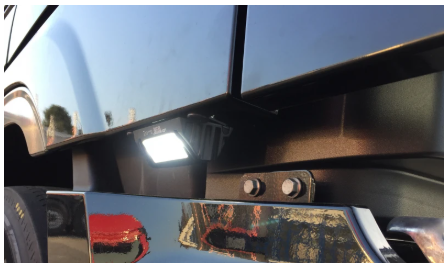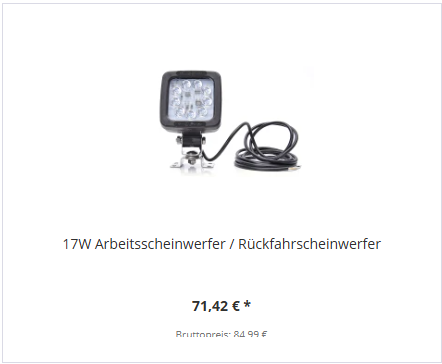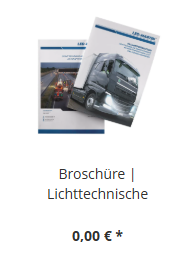Reverse lights: What is allowed?
Definition of Terms: Work Lights? Reversing Lights? Maneuvering Lights?
The question of the difference between a work light and a reversing light is quite easy to answer: A reversing light switches on together with the reverse gear, whereas a work light is activated via a button. Furthermore, a reversing light must be approved according to ECE-R23.
Legally, the consequences of this distinction are also easy to summarize. Work lights may not be used while driving on public roads and are therefore generally not suitable as maneuvering lights.
What Is Mandatory for Reversing Lights?
For good reason, every motor vehicle—except for two-wheelers—must be equipped with reversing lights: not only do they make it easier to detect obstacles when reversing by providing better illumination, they also alert other road users and pedestrians that a vehicle is backing up.
However, whether a single reversing light is sufficient or multiple are required depends on the vehicle's length: for tractors and other vehicles such as self-propelled work machines with a length of less than six meters, one reversing light is sufficient. For trucks and other vehicles longer than six meters, two reversing lights are mandatory.
What Is Allowed?
The legislator has not only defined the minimum number of maneuvering lights but also the maximum number permitted. Once again, this is based on the vehicle's length. Each reversing light must have an E-mark in accordance with ECE-R23.
For trucks and other vehicles longer than six meters, in addition to the two reversing lights at the rear, two additional rear-facing lights may be used as reversing lights. These can also be mounted on the sides of the vehicle, provided they are directed toward the rear. In contrast, vehicles under six meters in length may only have one additional reversing light mounted at the rear of the vehicle.
Why Use LED Reversing Lights?
At first glance, reversing lights may seem like a relatively unimportant component of vehicle lighting. For trucks that primarily operate on well-lit roads or company premises, or are only used for daytime delivery routes, that assumption might not be entirely wrong. Nevertheless, LED reversing lights are still highly recommended.
Trucks often reverse, and especially during maneuvering, frequently shift between reverse and forward gears. This frequent switching places considerable strain on traditional halogen bulbs, requiring them to be replaced more often—resulting in added cost and effort, not to mention potential liability issues in the event of an accident involving a defective reversing light. Here, LED maneuvering lights stand out with their long lifespan and maintenance-free operation.
If you have any further questions or require more detailed technical information on this topic, you can contact our team of experts at any time.
Based on experience, legal regulations change irregularly, therefore LED-MARTIN GmbH cannot guarantee the completeness of the information presented here.




